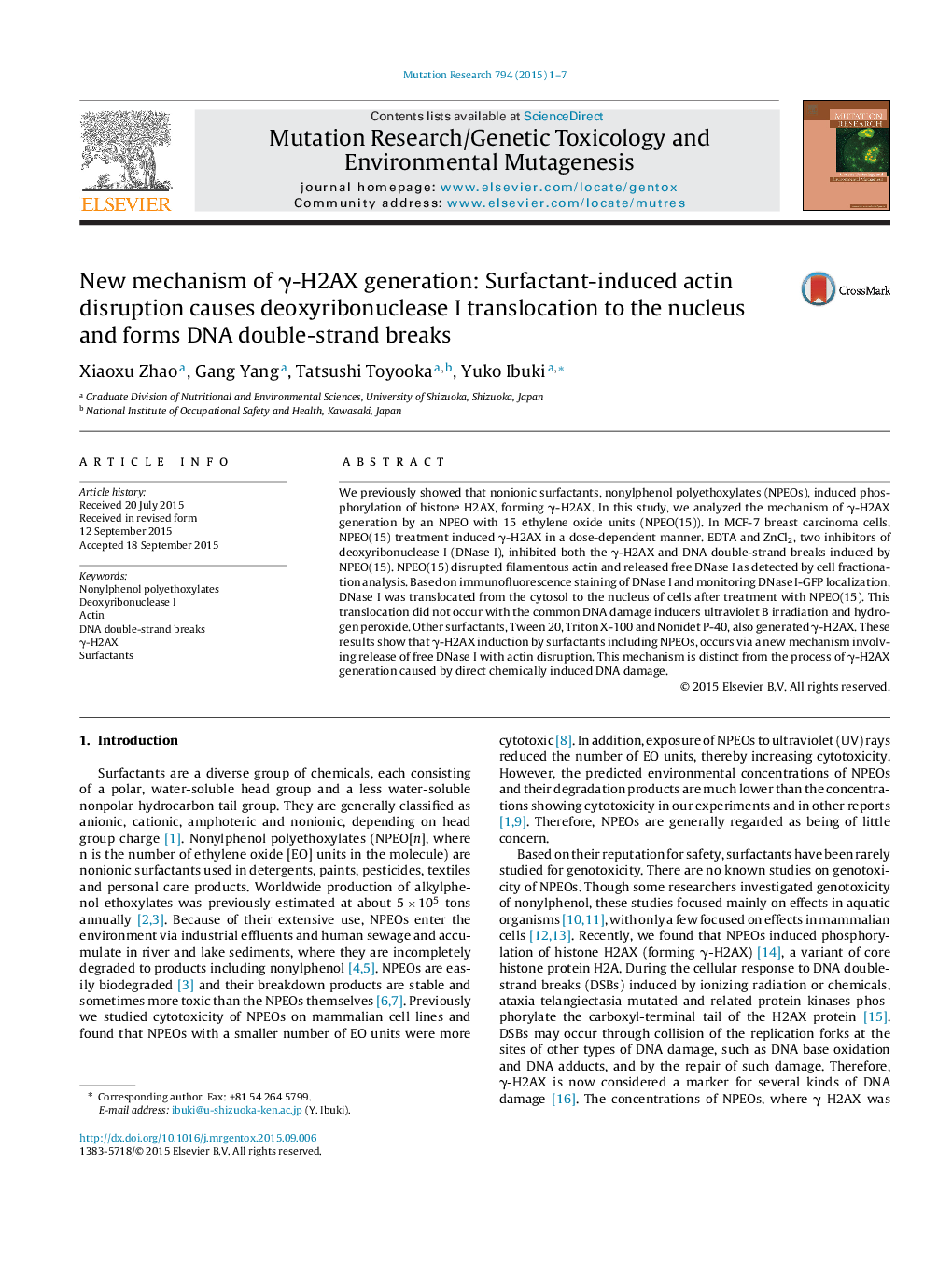| Article ID | Journal | Published Year | Pages | File Type |
|---|---|---|---|---|
| 8456300 | Mutation Research/Genetic Toxicology and Environmental Mutagenesis | 2015 | 7 Pages |
Abstract
We previously showed that nonionic surfactants, nonylphenol polyethoxylates (NPEOs), induced phosphorylation of histone H2AX, forming γ-H2AX. In this study, we analyzed the mechanism of γ-H2AX generation by an NPEO with 15 ethylene oxide units (NPEO(15)). In MCF-7 breast carcinoma cells, NPEO(15) treatment induced γ-H2AX in a dose-dependent manner. EDTA and ZnCl2, two inhibitors of deoxyribonuclease I (DNase I), inhibited both the γ-H2AX and DNA double-strand breaks induced by NPEO(15). NPEO(15) disrupted filamentous actin and released free DNase I as detected by cell fractionation analysis. Based on immunofluorescence staining of DNase I and monitoring DNase I-GFP localization, DNase I was translocated from the cytosol to the nucleus of cells after treatment with NPEO(15). This translocation did not occur with the common DNA damage inducers ultraviolet B irradiation and hydrogen peroxide. Other surfactants, Tween 20, Triton X-100 and Nonidet P-40, also generated γ-H2AX. These results show that γ-H2AX induction by surfactants including NPEOs, occurs via a new mechanism involving release of free DNase I with actin disruption. This mechanism is distinct from the process of γ-H2AX generation caused by direct chemically induced DNA damage.
Keywords
Related Topics
Life Sciences
Biochemistry, Genetics and Molecular Biology
Cancer Research
Authors
Xiaoxu Zhao, Gang Yang, Tatsushi Toyooka, Yuko Ibuki,
